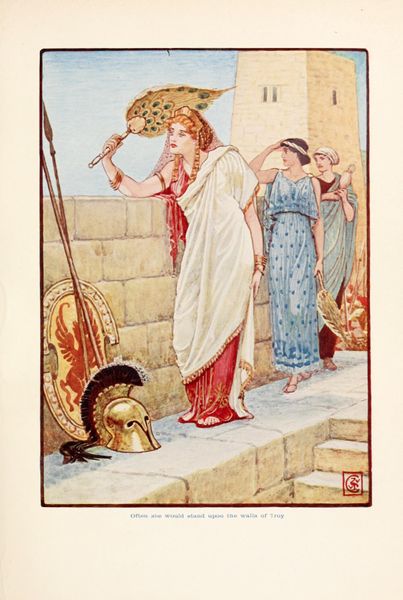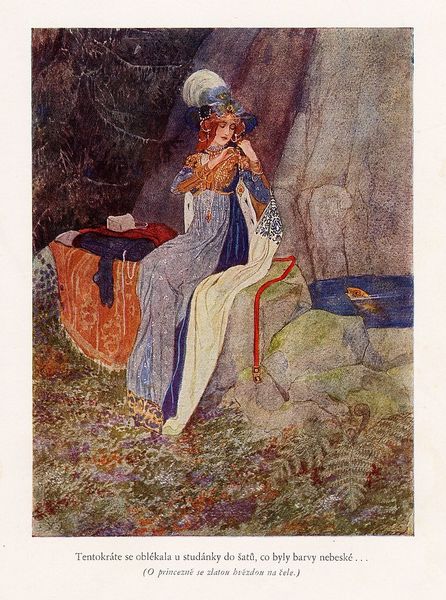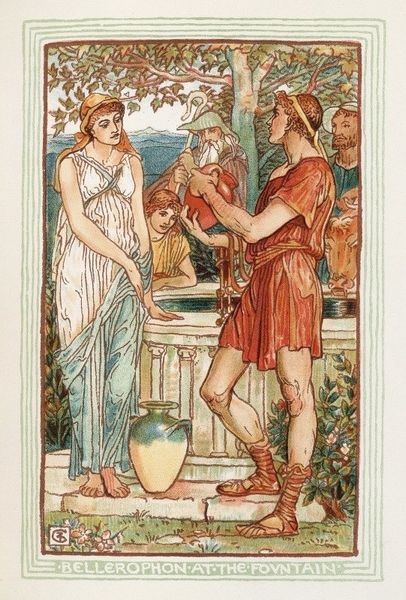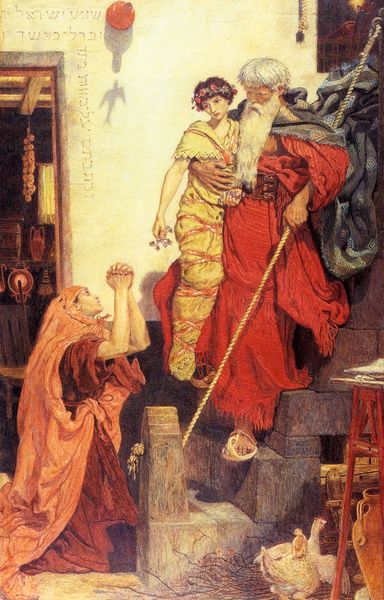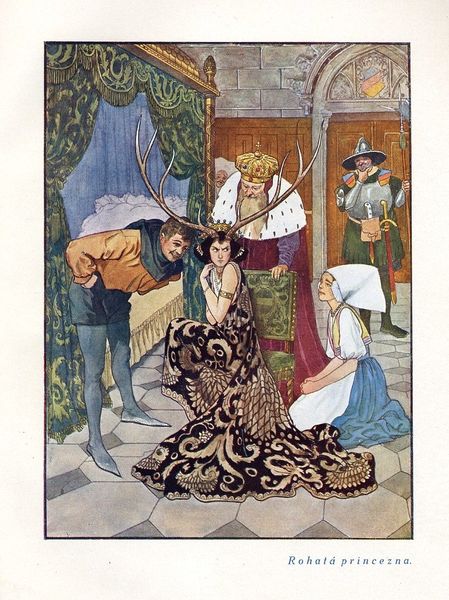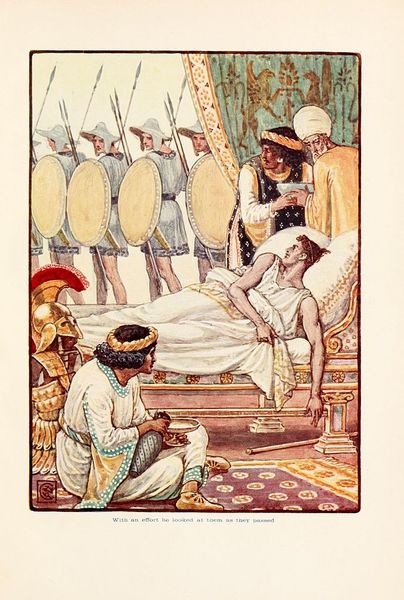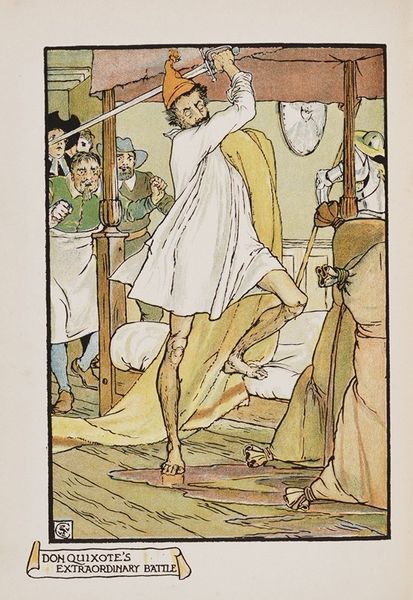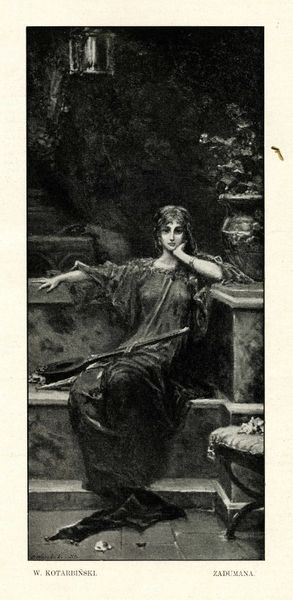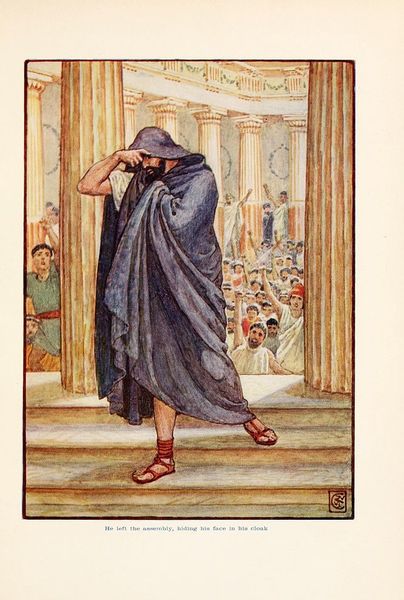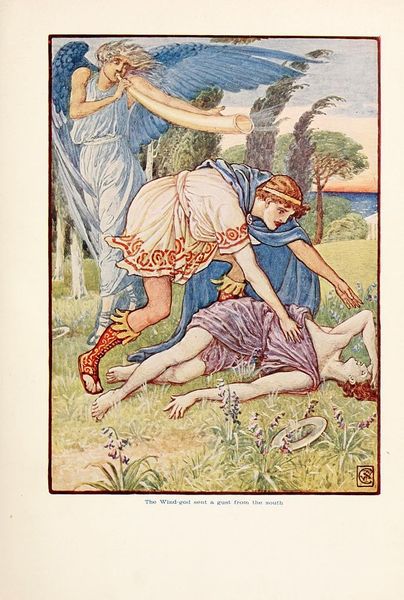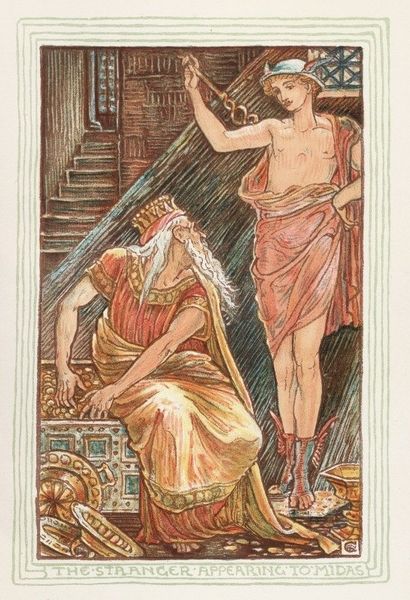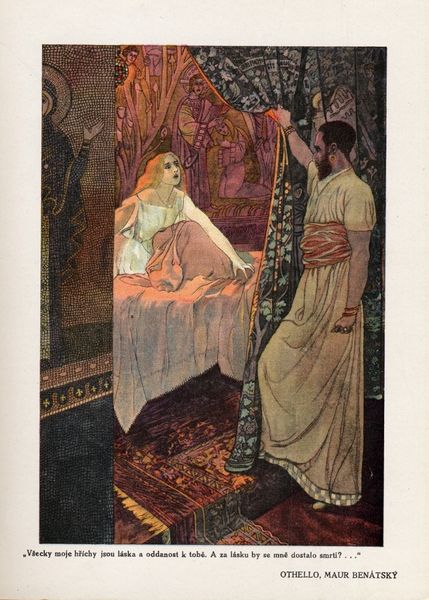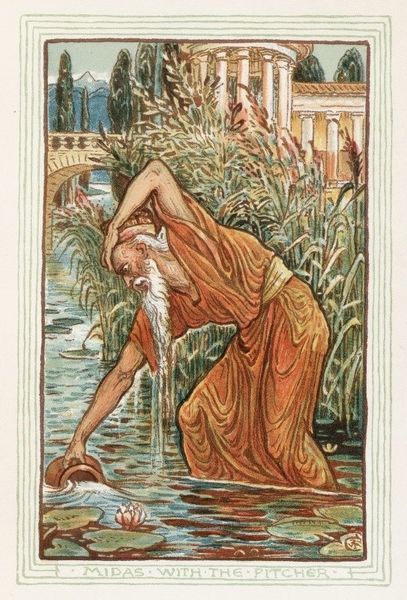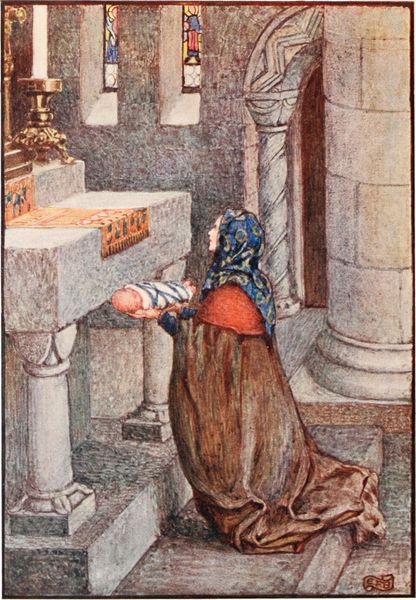
watercolor
#
fairy-painting
#
narrative-art
#
landscape
#
watercolor
#
symbolism
#
watercolour illustration
#
watercolor
Copyright: Public domain
Curator: This is Walter Crane's "She changed her into Spider," executed in watercolour. It's a work steeped in narrative and symbolism. The image itself makes quite the first impression. What strikes you initially? Editor: The severity, really. There's a potent contrast between the imposing figure of Athena and the almost theatrical collapse of Arachne. It seems charged with social commentary beyond a simple myth. Curator: Precisely. Crane's choice of watercolour softens what could have been a harsher scene, though. Looking at the texture, you can almost feel the dampness of the paper and see how the pigments settle, creating those layered washes of colour. Editor: And those washes construct a very deliberate world, don’t they? This piece points directly to the didactic function art often served, promoting specific social order, celebrating the authority while punishing transgressions. It's difficult to look at without understanding who art served in a period. Curator: I think it's relevant too how Crane chose watercolour specifically. Watercolour lends itself to reproduction; consider how easily these images might have circulated in books and prints, extending their reach far beyond gallery walls. It's an interesting tension between artistic vision and market forces. Editor: Very relevant indeed. And if we consider audience response – How does the narrative play to those grappling with power, craft versus high art, woman artist versus divine being, especially in times of increasing industrialisation, blurring production techniques across all trades. It becomes part of discourse, does it not? Curator: Absolutely! We also can’t ignore the actual weaving, or tapestry depicted in the scene itself as an object imbued with skill and labour, even as Arachne’s artistic act is punishable insubordination against divine will. Editor: So many strands pulling together! The layers, the power structures, both ancient myth and also potentially contemporaneous industrial production—I could stare at this and find something different everyday! Curator: Yes! Art becomes so much richer when you allow yourself that deep analysis. It really starts a discourse.
Comments
No comments
Be the first to comment and join the conversation on the ultimate creative platform.
